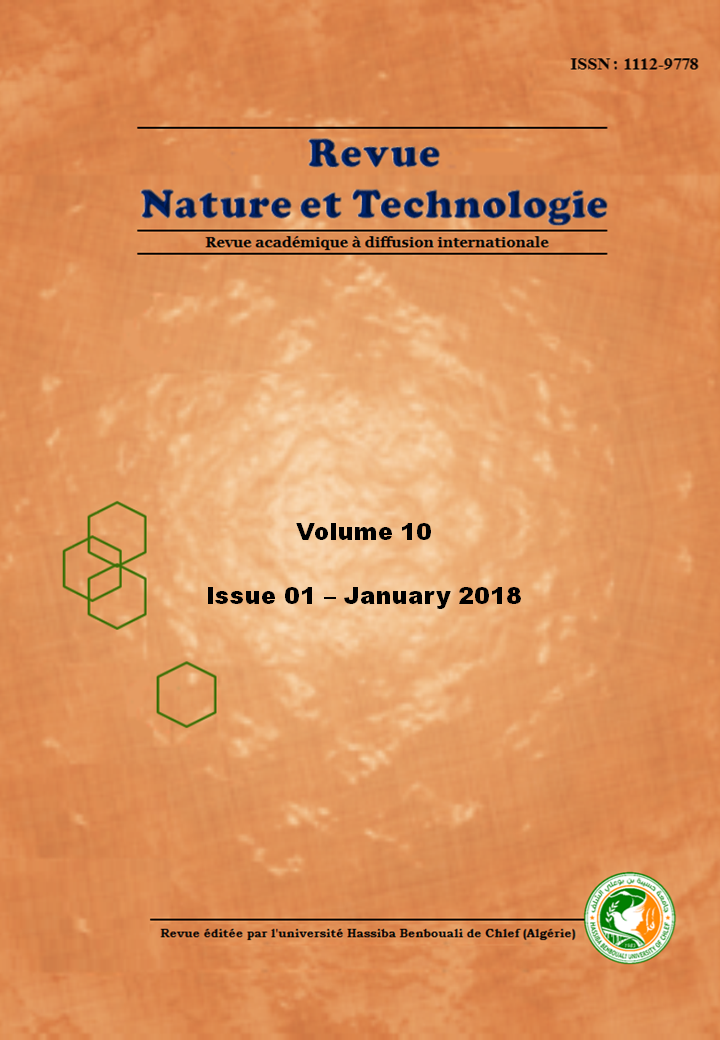Correlations between quality, enzymatic activities and storage stability of UHT milk in Tunisia
Keywords:
Ultra-high temperature (UHT) milk, Storage conditions, enzymatic activitiesAbstract
Destabilization of ultra-high temperature (UHT) milk (140 °C, 4s) in the form of gel or sediment may occur during storage. This
phenomenon is a real industrial and scientific problem that could be caused by milk proteolysis and lipolysis. This study aimed to study the influence of storage conditions (time, temperature) on the quality of UHT milk produced under industrial conditions. The physicochemical characteristics of these different kinds of milk, including composition and stability as assessed by phosphate test, were determined. UHT heat treatment of milk resulted in a change in pH, acidity, and stability derived from phosphate test, as well as in a drop in psychrophilic bacteria counts. Proteolytic and lipolysis activities also decreased with UHT treatment. However, during UHT milk storage for 6 months, the milk proteolytic activity increased, and in consequence, an increase in acidity and non-casein nitrogen values was observed. Moreover, lipolytic activity was higher in milk stored at 30 °C, as compared to the milk kept at 4 °C. In addition, the stability values increased during UHT milk storage at 30 °C. Stability was inversely correlated with milk fat and acidity (p<0.05). Furthermore, it showed a strong relationship with proteolysis (r=0.765), but no significant relationship was found with lipolysis. The analysis of the sediment of UHT milk stored for 6 months showed levels of fat (15 %), proteins (40 %) and lactose (42 %). The composition of the sediment illustrated the complexity of the formation process.
References
Louhichi R., (2013) Available on Internet: http://www.polecompetitivite-bizerte.com.tn/image.php?id=106
Chavan R. S., Khedkar C. D., Jana A. H.,Comprehensive Reviews in Food Science and Food Safety, 10 (2011) 251–268
Stoeckel M., Lidolt M., Achberger V., Glück C., Krewinkel M., Stressler T., Hinrichs J., International Dairy Journal, 59 (2016) 20-28.
Ul Haq I., Khaskheli M., Salman M., Marri M.Y., Marri M. A., Lochi G.M., Habib F., African Journal of Food Science 8 (2014) 75-79.
Xin L., Zhang L., Meng Z., Di W., Han X., Yi H., Cui Y., Journal of Food Processing and Preservation, (2017) DOI: 10.1111/jfpp.13289
Chove L.M., Abdulsudi I.Z., Lewis M.J., African Journal of Food Science, 7 (2013) 232-237.
Machado S.G, Baglinière F., Marchand S., Van Coillie E., Vanetti M.C., De Block J., Heyndrickx M., Frontiers in Microbiology, 8 (2017) 8
Datta N., Deeth H.C., Age gelation of UHT milk—a review. Food and Bioproducts processing, 79 (2001) 197-210.
Crudden A., Afoufa-Bastien D., Fox P.F., Brisson G., Kelly A.L., International dairy journal, 15 (2005) 1017-1025
Malmgren B., Ardö Y., Langton M., Altskär A., Bremer M.G., Dejmek P.M., Paulsson M., International Dairy Journal, 71 (2017) 60-75.
Siddique F., Riffat S., Arshad M., Farooq U., Iftikhar K., Kharal S., International Journal of Food and Allied Sciences, 2 (2016) 52-57.
Enright E., Bland A.P., Needs E.C., Kelly A.L., International Dairy Journal, 9 (1999) 581-591.
Rauh V.M., Johansen L.B., Ipsen R., Paulsson M., Larsen L.B., Hammershøj M., Plasmin activity in UHT milk: relationship between
proteolysis, age gelation, and bitterness, Journal of agricultural and food chemistry, 62 (2014) 6852-6860.
AOAC INTERNATIONAL (2010). Official Methods of Analysis, 18th Edition, Association of Official Analytical Chemists, Washington DC, 2010
Ramsdell G.A., Johnson Jr W.M.T., Evans F.R., Journal of Dairy Science, 14 (1931) 93–106.
Nagla B., Hassan A., Osman M., Abdallah M., Azim A., Nour M., Pakistan Journal of Nutrition, 8 (2009) 1845-1848.
Parry R.M., Chandan R.C., Shahani K.M., Journal of Dairy Science, 49 (1966) 356-360.
Fox P.F., Uniacke-Lowe T., McSweeney P.L.H., O’Mahony A.J , In: Dairy Chemistry and Biochemistry, Springer International Publishing, Basel, 2015, pp. 345-375.
Fox P.F., Uniacke-Lowe T., McSweeney P.L.H., J O’Mahony A., In: Dairy Chemistry and Biochemistry, Springer International Publishing, Basel, 2015, pp. 377-414.
Sørhaug T., Stepaniak L., Trends in Food Science & Technology, 8 (1997) 35-41.
Gaucher I., Mollé D., Gagnaire V., Gaucheron F.. Food, Hydrocolloids, 22 (2008) 130-143.
Aldubhany T.A.W., Gouda E., Khattab A., Dabour N., Alexandria Science Exchange, 35 (2014) 108.
Kelly A.L., Foley J., International Dairy Journal, 7 (1997, 411-420.
Jansson T., Jensen H.B., Sundekilde U.K., Clausen M.R., Eggers N., Larsen L.B., Bertram H.C., Journal of agricultural and food chemistry, 62 (2014) 11270-11278.
Gebre-Egziabher A., Humbert E.S., Blankenagel G., Journal of Food Protection, 43 (1980) 197-200.
Datta N., Deeth H.C., LWT-Food Science and Technology, 36 (2003), 173-182.

Downloads
Published
How to Cite
Issue
Section
License
Copyright (c) 2018 Nature & Technology Journal

This work is licensed under a Creative Commons Attribution 4.0 International License.
- All publications of "Nature & Technology Journal" are available under CC-BY Creative Commons Attribution 4.0 International which allows sharing, copying, reproduction, distribution, communication, reuse, adaptation by all means, in all formats and under all licenses.
- Any exploitation of the work or derivative works, including for commercial purposes, is possible. The only obligation is to credit the creators of the authorship of the original works, to indicate the sources and to indicate if modifications were made to the works (obligation of attribution).
This License gives:
- Nature & Technology Journal the right to develop, promote, distribute and archive the article set cited above (including, without limitation, the right to publish the work in whole or in part in any form whatsoever) and ensure the widest dissemination.
- The author (s) reserves the right to use all or part of this article, including tables and figures of his own works, providing that the appropriate recognition is given to the publisher as the holder of the copyrights, and the right to make copies of this article for its own use, but not for sale.




